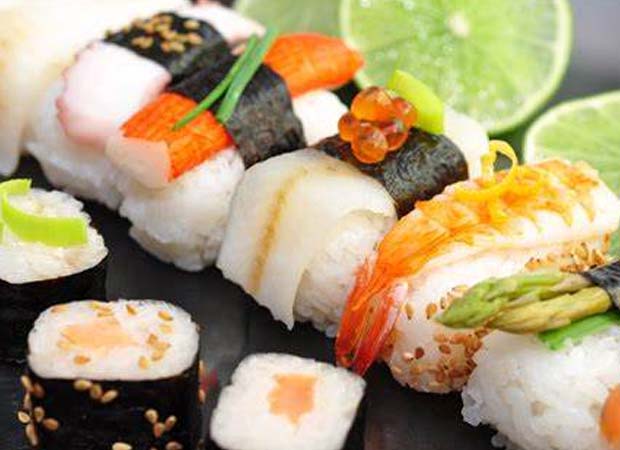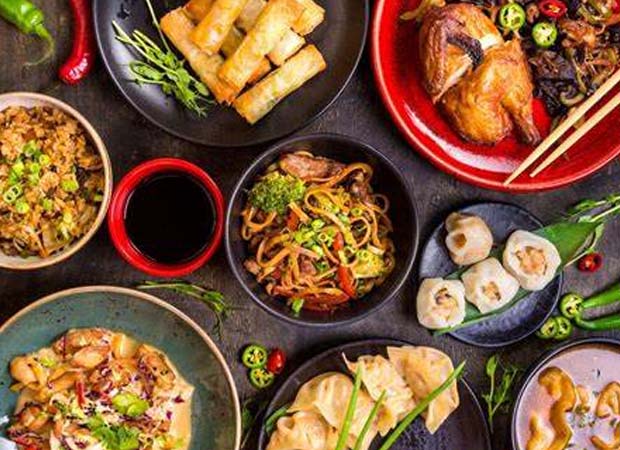Difference Between Chinese and Japanese Food: Ever stare at a menu filled with tempting “Asian” options, only to wonder which is which? While Chinese and Japanese food both belong to East Asia, they offer distinct flavor profiles and styles. Fear not, fellow foodie! This post dives into the key differences, helping you choose the perfect culinary adventure.
“From fluffy bao buns to meticulously sliced sashimi, the ingredients and cooking styles of Chinese and Japanese food showcase distinct traditions. This post unpacks the key differences, unraveling the secrets behind wok-kissed stir-fries and the artistry of tempura. Discover the worlds of rice, noodles, and fresh seafood, navigating your way to your next delicious discovery!”
Also Read: Why is Food so Cheap in Japan
Think you know your General Tso’s from your Tempura? Think again. While both Chinese and Japanese cuisine tantalize our taste buds, they’re more like distant cousins than identical twins. Join us on a delicious journey to unlock the Difference Between Chinese and Japanese Food! Buckle up for insights into spice levels, cooking styles, and presentation secrets that will make you a pro food explorer. ️
Chinese Food
Difference Between Chinese and Japanese Food: Forget fortune cookies and takeout menus – Chinese cuisine is a vibrant tapestry of regional specialties, ancient cooking techniques, and an explosion of flavors that go far beyond the familiar sweet and sour chicken. Whether you’re a seasoned foodie or a curious newcomer, dive into this delicious journey as we explore the unique characteristics that set Chinese food apart.
A Universe of Ingredients: Unlike the streamlined menus we often encounter, Chinese cooking embraces various regional ingredients. Imagine fluffy white bao buns from the north contrasting with the fiery Sichuan peppers of the west, the delicate seafood specialties of the coastal regions meeting the hearty stews of the northeast. This diversity guarantees that every bite offers a new adventure for your palate.
A Symphony of Cooking Techniques: Chinese cooking showcases culinary artistry from the lightning-fast wok hei charring vegetables to the slow simmering of aromatic broths. Witness the delicate art of dumpling-making, where paper-thin wrappers enclose savory surprises, or marvel at the intricate knife work that transforms vegetables into edible sculptures. Each technique unlocks a unique dimension of flavor and texture.

Spice Up Your Life (or Not): Chinese food isn’t always about heat, contrary to popular belief. While regions like Sichuan are known for their fiery chili peppers, other areas focus on subtler flavor profiles. The East Coast boasts fresh seafood simmered in delicate broths, while the South showcases stir-fries that dance with sweetness, sourness, and savoriness. The beauty lies in the variety, catering to every spice preference.
Presentation as Part of the Plate: Chinese food is as much about visual appeal as it is about taste. Think vibrantly colored vegetables artfully arranged on platters, the intricate folds of steamed buns, and the mesmerizing dance of flames as chefs stir-fry ingredients in woks. The presentation adds another layer to the dining experience, transforming every meal into a feast for the eyes.
More Than Just a Meal: Food in Chinese culture is deeply woven into traditions and celebrations. Every dish tells a story and connects communities, from elaborate family gatherings around shared platters to celebratory dim sum brunches. Sharing a meal becomes a way to connect, celebrate, and forge lasting memories.
Japanese Food
Difference Between Chinese and Japanese Food: Sure, it might be the first thing that pops into your mind when you think of Japanese food, but its culinary landscape is far more nuanced and captivating. Forget greasy takeout and embrace the delicate art of Japanese cuisine, where every bite is a symphony of fresh ingredients, meticulous preparation, and an emphasis on seasonality and presentation.
Ingredients as Art: Japanese cuisine revolves around the freshest, most seasonal ingredients. Think vibrant sashimi showcasing the ocean’s bounty, perfectly cooked rice that’s the foundation of every meal, and vegetables treated with respect, their natural flavours amplified through simple cooking techniques. Even humble tofu takes centre stage, dressed with delicate sauces and showcasing its versatility.

Flavorful Simplicity: Unlike its bolder Chinese counterpart, Japanese food celebrates subtlety and balance. Forget overwhelming spice and embrace the delicate dance of umami (savory), kombu (kelp), and dashi (broth) that form the backbone of many dishes. Sweetness is used sparingly, highlighting the natural flavors of each ingredient. Every bite is an invitation to savor the nuances, a testament to the “less is more” philosophy.
Culinary Artistry: Japanese chefs elevate food preparation to an art form. Witness the meticulous knife work that transforms vegetables into delicate garnishes, the artistry of sushi chefs hand-moulding rice and arranging vibrant toppings, and the mesmerizing dance of flames charring yakitori skewers. Each dish is a visual masterpiece before it even reaches your plate.
A One-of-a-Kind Dining Experience: Japanese meals are more than just sustenance; they’re immersive experiences. From the serene ambience of traditional tea ceremonies to the communal spirit of robatayaki grills, every aspect engages your senses and connects you to the culture. Even a simple bento box becomes a miniature world of flavours and textures meticulously arranged for your enjoyment.
Beyond the Familiar: While sushi and ramen might be popular, Japanese cuisine offers many hidden gems. Explore the comforting warmth of miso soup, the melt-in-your-mouth texture of gyoza dumplings, or the savory richness of sukiyaki hotpot. Each region boasts its specialties waiting to be discovered.
Difference Between Chinese and Japanese Food?: Japanese food is more than just delicious; it invites exploring a unique culture and philosophy. By understanding the emphasis on fresh ingredients, delicate flavours, and artistic presentation, you embark on a journey that nourishes your body and soul. So, the next time you encounter Japanese cuisine, remember: it’s an invitation to slow down, savor the moment, and appreciate the beauty hidden in every bite.
What is The Difference Between Chinese and Japanese Food?
Difference Between Chinese and Japanese Food: Ever stare at an “Asian” menu, overwhelmed by seemingly identical options? While Chinese and Japanese food belong to East Asia, they offer distinct experiences for your taste buds, steeped in unique traditions and philosophies. Let’s embark on a delicious journey to unveil the key Difference Between Chinese and Japanese Food?
| Feature | Chinese Food | Japanese Food |
| Staple Grain | Rice, Noodles (wheat, rice, vermicelli) | Rice |
| Ingredients | Wide variety of meats, vegetables, seafood, spices, herbs | Emphasis on fresh, seasonal ingredients, seafood, tofu, minimal spices |
| Flavor Profile | Bold, diverse, spicy (optional), sweet, sour, savory | Subtle, umami-rich, balanced, less spice |
| Cooking Techniques | Stir-frying, deep-frying, steaming, braising, simmering | Grilling, simmering, steaming, poaching, raw preparations |
| Presentation | Large communal platters, vibrant colors, emphasis on texture | Individual portions, minimalist aesthetics, focus on clean lines |
| Dining Experience | Kung Pao Chicken, Dim Sum, Dumplings, Peking Duck | Sushi, Ramen, Tempura, Sashimi, Miso Soup |
| Spice Level | Wide range, from mild to fiery (Sichuan cuisine) | Generally mild, subtle spice accents |
| Popular Dishes | Kung Pao Chicken, Dim Sum, Dumplings, Peking Duck | Sushi, Ramen, Tempura, Sashimi, Miso Soup |
Conclusion for Difference Between Chinese and Japanese Food?
This table helps you appreciate the differences between Chinese and Japanese food and encourages you to delve deeper into their unique flavours and traditions. Remember to share your favourite dishes and discoveries in the comments below.
Hi my loved one! I wish to say that this post is awesome, great written and include almost all significant infos.
I would like to peer extra posts like this .